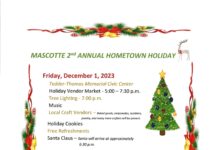
Since April 9, Groveland retailers have been intercepting counterfeit U.S. currency. The bills ranged from $1 to $100 denominations. Groveland police responded and confirmed the bills are counterfeit. Groveland police conducted the initial investigations and then contacted the U.S. Secret Service, which is the federal agency responsible for investigating counterfeit currency. The Secret Service gained custody of the counterfeit bills and took over the investigations. At this time, there are no known suspects and no further information on the source of the counterfeit currency or how it is getting into circulation in Groveland.
Experts say that digital technology has allowed counterfeiters to use increasingly sophisticated technology to their benefit. When businesses accept counterfeit money, they bear the burden of the loss.
Groveland police are encouraging retailers to be aware of the following methods that could help them detect counterfeit bills:
- Hold the bill up to a light and look for holographic images of a face on the bill. If the $100 bill has been bleached, the hologram will display an image of Abraham Lincoln, who appears on the $5 bills, instead of Benjamin Franklin.
- Looking at the bill through a light will also reveal a thin vertical strip that contains text that spells out the bill’s denomination.
- Color-shifting ink: Hold a new series bill (except the $5 note) and tilt it back and forth. There is a numeral in the lower right-hand corner as the bill is tilted; its color shifts from green to black and back.
- Watermark: Hold the bill up to a light to view a watermark in an unprinted space to the right of the portrait. The watermark can be seen from both sides of the bill since it is not printed on the bill but is imbedded in the paper.
- Ultraviolet Glow: If the bill is held up to an ultraviolet light, the $5 bill glows blue; the $10 bill glows orange, the $20 bill glows green, the $50 bill glows yellow, and the $100 bill glows red – if they are authentic.
- Microprinting: There is microprinting on the security threads: the $5 bill has “USA FIVE” written on the thread; the $10 bill has “USA TEN” written on the thread; the $20 bill has “USA TWENTY” written on the thread; the $50 bill has “USA 50” written on the thread; and the $100 bill has the words “USA 100” written on the security thread. Microprinting can be found around the portrait as well as on the security threads.
- Fine Line Printing Patterns: Very fine lines have been added behind the portrait and on the reverse side scene to make it harder to reproduce.
- Comparison: Compare the feel and texture of the paper with other bills you know are authentic. In addition, all margins on the bills should be equal in size.
The pictures below are all of the same $10.00 bill.
 Note the size of the margin at the top, on the back of the bill as opposed to the size of the margin at the top, on the face of the bill.
Note the size of the margin at the top, on the back of the bill as opposed to the size of the margin at the top, on the face of the bill.
The size of the margin at the top, on the face of the bill is dramatically narrower than that of the margin on the back.
If you believe you have received a counterfeit bill, the Groveland Police Department advises you to do the following:
- Do not put yourself in danger – your safety is most important.
- Do not return the bill to the customer.
- Delay the customer with some excuse, if you can do so safely.
- Observe the customer’s description – and their companions’ descriptions – and write down their vehicle license plate numbers if you can do so safely.
- Call 911 to contact the Groveland Police Department immediately.
- Do not handle the counterfeit note if possible; place it inside a protective cover, such as a plastic bag or envelope to protect it until a Groveland police officer can retrieve it. Source: Davis, P. (2017). “Counterfeit money: How to spot fake bills,” from the website “Business Know How” at https://www.businessknowhow.com/security/counterfeitmoney.htm
If anyone has information related to this case, please contact the Groveland Police Department at 352-429-4166 or CRIMELINE at 800-423-TIPS. CRIMELINE offers a cash reward for information leading to a felony arrest. Call 1-800-423-TIPS or go to crimeline.org. Callers will remain anonymous and do not have to give their name.









